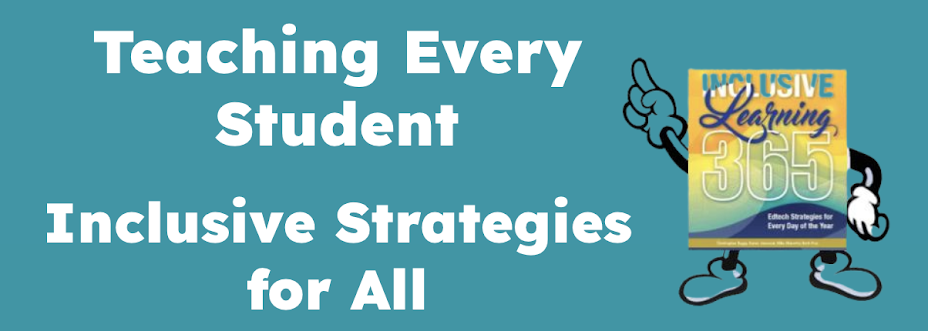Reluctant writers, aren't born. They are often casualties of our classroom instruction. How? Possible reasons include the following:
- Remembering how to hold the writing the pencil correctly, form the letters correctly, space between words, generate thought and remember how to write a sentence with correct punctuation while making sense is too challenging for some kids.
- Due to handwriting issues, we've assigned a scribe for them, so they never have the opportunity to practice the art of writing on their own. Then the risks become too great.
- Poor spelling inhibits thought expressed on paper. Red pen corrections anyone?
So what can you do to help overcome the writing barriers? Give students opportunities to feel successful, offering engaging alternatives to paper based options. Oftentimes, the paper is the disability. Instead, explore these tools to get kids excited about writing again. Using computer based tools removes the obstacles of legible letter formation and spacing, what to write about and where to begin. A few ideas to get you started:
- Characters - this tool offers the ability to generate a character, while changing hair, clothing, skin tone and facial features. Students can use this tool t
 o then generate descriptive writing about something they created. Take a screen shot to save the created text and character.
o then generate descriptive writing about something they created. Take a screen shot to save the created text and character. - Wacky Web Tales - an online MadLibs. Kids add single words by category (clothing, adjective, word ending in -ing, etc) so best for grade 3 and above.
- Online Story Starters from Scholastic - Spin the levers to generate various writing prompts in various formats. I just spun this starter - "Describe a vacation with a silly kangaroo who goes to summer camp" (a second grade prompt) and can type in a notebook, letter, newspaper or postcard format. Includes a drawing tool. Great for grades K-6.
- Fractured Fairy Tales - Create your own fairy tale based upon three popular stories. from the Student Interactive Resources at readwritethink.org.
- Bio-Cube - create a three dimensional character cube describing six traits about a character they have read about or adapt it to be autobiographical.
Add any ideas that work for your students.
o then generate descriptive writing about something they created. Take a screen shot to save the created text and character.

As a Spanish teacher, the issue of spelling is a nemesis for students with learning disabilities. Fact is, incorrect spelling in another language often changes the meaning of a word, and encourages incorrect pronunciation. I very much want students with learning disabilities to take a second language, and there are only so many accommodations that can be made.
ReplyDeletethanks for posting this one..im not just reluctant as a writer...im a reluctant person as well :(
ReplyDeleteKaren,
ReplyDeleteI was a reluctant writer. Without learning the proper writing skills or having the confidence, I have always labored over my writing therefore, I can see these cool interactive and self-starting writing sites being a win-win for both teachers and students. Thanks for sharing.
I think students often struggle with the organisation of thoughts prior to writing. Take a look at the "saving reluctant writers" powerpoint at www.modellearning.com/ideas/ideas-powerpoints.aspx
ReplyDeleteIt's a free resource and deals with the use of graphic organisers to aid that organisation.